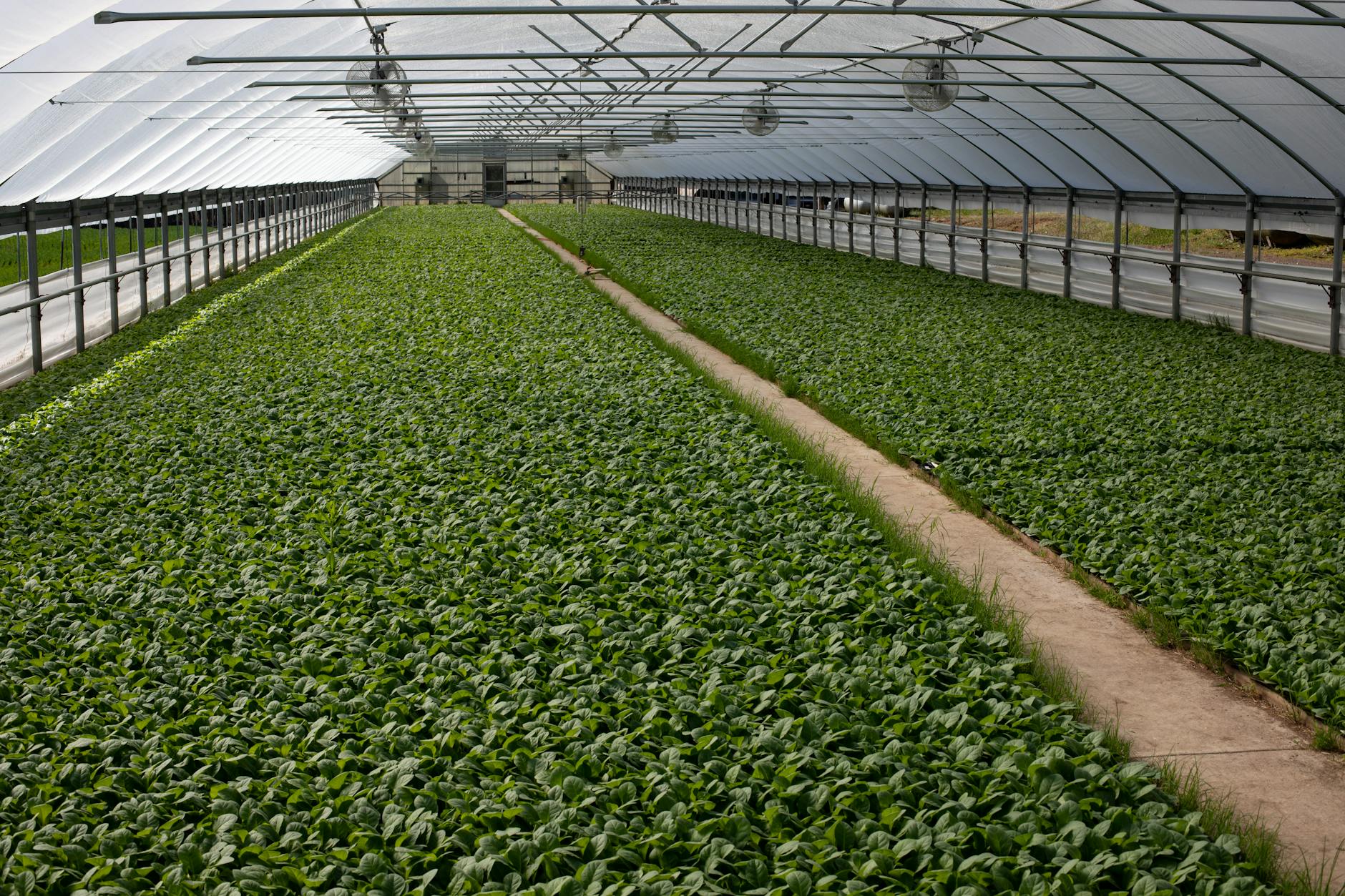
Climate change and food insecurity are pressing issues, but they share an important solution: agroecology. By merging sustainable farming with local knowledge, agroecology offers a way to reform food systems while addressing environmental concerns. More importantly, it can help unlock climate finance, ensuring countries get the funding they need to make these changes. This approach not only supports farmers but also works toward food system transformation on a global scale.
Understanding Agroecology
Agroecology goes beyond just farming; it’s an approach to agriculture that integrates ecological principles with social systems to create sustainable and resilient food production methods. Where industrial farming often focuses on maximum immediate yields, agroecology considers the broader implications: from soil health to community well-being. Understanding how it works is key to unlocking its full potential.
Core Principles of Agroecology
At its heart, agroecology relies on key interwoven principles that guide its methodology. These principles are not just about growing food but about ensuring the sustainability of the entire ecosystem that supports it.
- Biodiversity: Agroecology emphasizes diversity in crops and livestock rather than monocultures. A field with multiple crops is more than just pretty; it’s an insurance policy against disease outbreaks and a foundation for healthier soils. Biodiversity also encourages beneficial insects and reduces the need for chemical inputs. Read more about agroecology principles.
- Soil Health: Healthy, nutrient-rich soil is the backbone of agroecology. Instead of relying on fertilizers that strip nutrients over time, this approach uses composting, crop rotation, and cover crops to replenish and maintain soil quality. Protecting soil is akin to saving for the future—healthy soil ensures agricultural productivity for generations.
- Ecological Balance: Agroecology works with nature, not against it. It considers the interplay between organisms, both plant and animal, in its farming systems. Pollinators, natural predators of pests, and microbial life in soils all play critical roles. This principle ensures resilience against climate extremes and reduces dependency on synthetic interventions.

Photo by ThisIsEngineering
These principles don’t just apply to farms but extend to the broader food systems, including processing, distribution, and consumption.
Agroecology vs. Conventional Agriculture
What sets agroecology apart? The most glaring differences appear in how each approach treats land, resources, and the environment.
- Farming Practices:
- Conventional agriculture often depends heavily on chemical fertilizers, pesticides, and monoculture planting. These methods can lead to soil degradation, loss of biodiversity, and greenhouse gas emissions.
- Agroecology promotes natural processes like biological pest control, intercropping, and organic nutrients to sustain the land without depleting it.
- Environmental Impact:
- One of the major critiques of conventional farming is its environmental toll. From deforestation to water contamination, industrial methods often harm the environment.
- Agroecology, on the other hand, aims to regenerate ecosystems. Practices like agroforestry and permaculture enhance carbon sequestration and restore damaged land areas. Learn more about the differences between agroecology and conventional agriculture.
- Sustainability Outcomes:
- Conventional farming is typically output-driven with a focus on immediate high yields. Unfortunately, this focus often comes at the expense of long-term resource sustainability.
- Agroecology champions sustainability with practices designed to endure over time and adapt to climate pressures. Its core aim is not just feeding today’s population but ensuring future generations can also thrive.
While conventional agriculture may seem easier and more profitable short-term, agroecology’s holistic focus makes it the stronger choice for sustainable food systems transformation.
Climate Finance Landscape
Climate finance plays a crucial role in addressing the impacts of climate change, supporting developing countries, and accelerating sustainable practices in agriculture. For agroecology to thrive, nations must access funds designed to adapt and mitigate the climate crisis.
Global Climate Finance Initiatives
Several global initiatives provide the financial backbone to combat climate change, especially within agricultural sectors. These funds not only support mitigation measures but also focus on adaptation projects, ensuring resilience for vulnerable communities.
- Green Climate Fund (GCF): As the largest fund dedicated to climate action, GCF supports developing nations in implementing innovative agricultural projects. The fund prioritizes climate-resilient practices, such as sustainable soil management and agroforestry. Learn more about how the Green Climate Fund operates and its alignment with agriculture.
- Acumen Resilient Agriculture Fund (ARAF): This initiative helps smallholder farmers adopt sustainable practices to adapt to the harsh effects of climate change. It offers critical long-term support, especially in regions prone to drought or flooding. Discover more about its impact through Adaptation initiatives.
- FAO-GCF Partnership: The Food and Agriculture Organization collaborates with GCF to streamline agricultural projects focused on energy efficiency and food security. Projects under this partnership significantly enhance rural livelihoods while promoting sustainability. More about this partnership can be found here.
Other players in the climate finance landscape include multilateral development banks and funds that target energy-efficient farming systems. These initiatives symbolize hope for improved food systems, but challenges remain.

Photo by Kaboompics.com
Barriers to Accessing Climate Finance
While the available funds seem promising, many developing nations face hurdles in tapping into these resources. Unlocking the potential of climate finance is often easier said than done. Here are some common barriers:
- Bureaucratic Complexities: Many countries struggle with the lengthy approval cycles and administrative requirements. Applications often require extensive technical expertise, which low-income nations might lack.
- Lack of Farmer Representation: Climate finance is often designed without significant input from smallholder farmers. This disconnect results in projects that fail to address local needs effectively. Read more on the structural barriers faced in small-scale agriculture.
- Limited Land Tenure Rights: Many farmers in low-income regions do not own the land they cultivate. Without legal land ownership, they face challenges in accessing loans or grants for climate-smart practices. Check out this detailed report on the climate finance gap.
- Inadequate Capacity Building: Countries lacking institutional frameworks and technical knowledge often find it hard to navigate grant requirements or implement programs effectively.
- Mistrust and Financial Security: Some farmers and governments mistrust funding organizations, worrying about risks tied to stringent repayment or use requirements. For example, a study highlighted mistrust in formal climate-related services as a key barrier.
Although these obstacles are daunting, overcoming them is essential to scaling agroecology and other sustainable agricultural systems.
Linking Agroecology and Climate Finance
Agroecology provides more than just sustainable farming techniques—it offers solutions to pressing climate challenges. By strategically linking agroecological practices with climate finance, countries can mitigate the effects of climate change and fund a complete overhaul of their food systems. This relationship can unlock global opportunities when implemented effectively.
Agroecology as a Climate Solution
Agroecological practices address two key climate challenges: carbon sequestration and resilience against climate variability. These methods improve soil health, encourage biodiversity, and reduce greenhouse gas emissions while strengthening ecosystems’ ability to cope with climate shocks.
- Carbon Sequestration: Agroecology supports practices like cover cropping, agroforestry, and organic composting, all of which promote carbon capture in soils and vegetation. For instance, trees used in agroforestry systems absorb significant amounts of CO2, creating a natural carbon sink. This is a vital contribution to global carbon reduction goals. Learn more about agroecology’s role in climate mitigation.
- Climate Resilience: Many agroecological techniques are designed with resilience in mind. Crop diversification, for example, spreads risk during droughts or floods, ensuring food security for smallholder farmers. Similarly, conservation-oriented practices like mulching and water harvesting make farmlands more adaptable to changing weather patterns.
Agroecology doesn’t just work with nature; it reinforces nature’s capacity to self-sustain.
Case Studies of Successful Implementation
Countries that integrate agroecology with climate finance projects have seen remarkable results. These nations provide real-world evidence that these systems can work hand-in-hand when approached thoughtfully.
- India’s Agroforestry Initiative: In India, agroecological practices have been scaled through projects financed by the Green Climate Fund. Smallholders are incentivized to adopt agroforestry models, which not only sequester carbon but also provide sustainable income sources. The project focuses on maximizing land use efficiency and is now a model for other developing countries. Explore more about agroecology-driven initiatives.
- Brazil’s Agroecology Policies: Brazil has pioneered policies that align agroecology with public financing. Through initiatives like the National Agroecology Plan, farmers receive subsidies for transitioning to agroecological practices. These programs have delivered measurable results in improving soil fertility and reducing climate vulnerability.
- Malawi’s Holistic Approach: Malawi exemplifies how agroecology and climate finance can be harmonized to address food insecurity. The country uses funds from international donors to implement systems like intercropping and sustainable irrigation, benefiting both farmers and the broader environment. Check out reports on successful agroecology funding in Africa.
These success stories highlight the potential for global replication, offering lessons for nations looking to tap into climate finance for agroecological advancement.

Photo by Mark Stebnicki
Agroecology and climate finance do not exist in silos. Together, they create a pathway to combat climate change, empower farmers, and revolutionize food systems at scale.
Funding Mechanisms for Food Systems Transformation
Innovative funding mechanisms are essential for transforming global food systems. Without adequate financial support, sustainable practices like agroecology cannot scale to meet growing global challenges. By fostering partnerships and embracing community-driven models, nations can secure the capital necessary to innovate and sustain resilient food systems.
Public and Private Sector Collaboration
Cooperation between governments, NGOs, and private investors is key to unlocking large-scale funding for food systems transformation. Public-Private Partnerships (PPPs) allow each sector to play to its strengths while sharing resources and risks. These partnerships have been successfully utilized worldwide to drive agricultural innovation and expand access to finance.
- Governments can establish enabling environments through favorable policies, subsidies, and tax incentives. By doing so, they lower barriers that would otherwise deter private investment.
- Private Investors, including banks and agribusinesses, often bring technological expertise and capital. For instance, partnering with agri-tech companies can help scale sustainable farming innovations.
- NGOs and Development Agencies act as mediators, ensuring sustainable practices are prioritized and local communities are included in decision-making processes.
Successful examples include initiatives by the World Bank that focus on agribusiness development through PPPs. Additionally, FAO-backed projects align public sector goals with private sector efficiency. These models demonstrate how combined efforts can transform food systems while maintaining environmental and social accountability.
Community-Based Funding Models
Grassroots initiatives often reveal some of the most innovative approaches to funding food systems. Community-based funding models empower farmers to drive change from the ground up, creating self-sustaining systems that reduce dependency on external aid.
Some proven strategies include:
- Crowdfunding: Platforms like GoFundMe or Kickstarter enable citizens to directly support local farming projects.
- Cooperatives: Farmers pool resources, share risks, and collectively apply for grants or loans, multiplying their financial strength.
- Community-Supported Agriculture (CSA): Consumers prepay for seasonal crops, offering farmers upfront capital to support their operations.
- Rotating Funds: Community members contribute to a shared fund that is rotated among participants for individual agricultural needs.
For example, the Community Food Projects initiative by the USDA provides grants to promote self-reliance in local food systems. Similarly, the Guide to Financing Community Farms highlights diverse funding models that farmers can adopt to enhance sustainability.
By tapping into local knowledge and financial participation, these grassroots models deliver resilient solutions tailored to the needs of each community.

Photo by RDNE Stock Project


